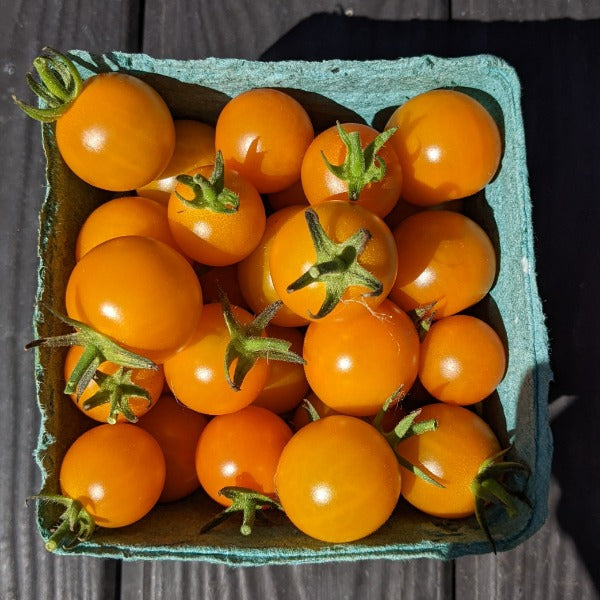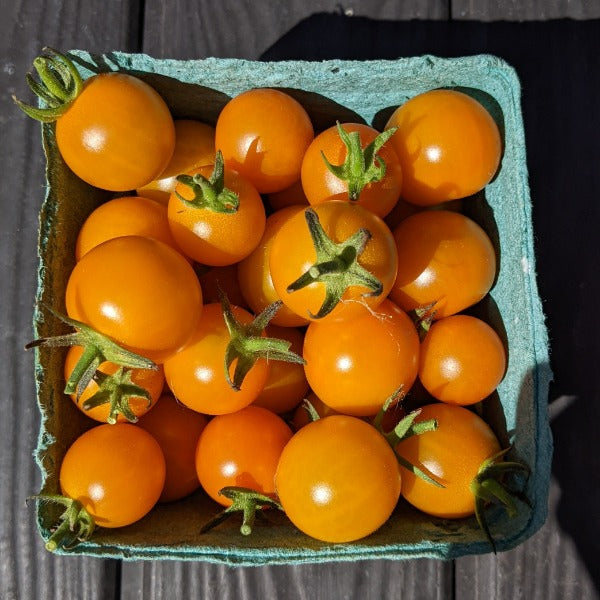My Store
Soleil Orange Cherry Tomato
Soleil Orange Cherry Tomato
Couldn't load pickup availability
Expert tasters say there is no match for the Sungold. We think this open-pollinated variety is even better! Tangy, sweet and addictive. Yum!!
Start indoors, seeding 5mm-1cm deep, with bottom heat and lots of light; transplant into bigger pots before plants become rootbound. Plant out when night lows are above 10 degrees C; space plants 50-75cm apart in rows 1m apart and provide supports. Germination in 7-14 days, 65 days to maturity. Indeterminate.
Latin: Solanum lycopersicum
Certified organic in British Columbia. IOPA # 1606, 1105, 1920.
How to Harvest Tomato Seeds
Fast Facts
Latin: Solanum Lycopersicum
Cross Pollination: Other tomato varieties
Isolation Distance: 10 feet
Minimum Population Size (variety maintenance): 5-10 plants
Minimum Population Size (genetic preservation): 20 plants
Seeding and Care
Grow tomatoes as usual, giving 2 feet of space between plants to ensure that they grow to their full potential. Mark off the first tomatoes to form with flagging tape, do not harvest these to eat. Instead, leave these on the plant, allowing the seed inside to ripen. By saving seed from the first fruits to form, your seed population will gradually become earlier to flower and set fruit over many generations.
Seed Maturity
Let tomatoes get overripe. They should be cracking and fully flushed with colour, a shade darker than ripe-for-eating tomatoes, before harvesting for seed.
Seed Harvest
Tomato seeds are wet processed and fermented, so harvest looks a lot different than other seed types. Fermentation is a necessary step for tomato seeds, since the gooey substance that surrounds the seeds contains a germination inhibitor. When growing wild, tomatoes fall to the ground and decay over time, and their seeds won’t germinate until the germination inhibiting goo has rotten away. This ensures that the plants emerge in the spring when the season has warmed again and conditions are optimal, and not any sooner.
To harvest seeds, slice tomatoes across the equator, and squeeze the goo and seeds out into a large jar or bucket. Fill with lots of water, roughly ⅔ water to ⅓ seed goo or more, and leave in a warm place without a lid. Do not seal the container, as pressure will build as fermentation takes place. A paper towel or cheesecloth can keep flies out while letting air pass through. Let the liquid ferment for 4 days to 1 week. Fermentation time will depend on ambient temperature. Once a layer of mould has formed at the top of the bucket, pour off the top mouldy layer then run the whole mixture through a strainer, rinse out all of the remaining pieces of flesh and mould and lay the seeds to dry on a tray lined with paper in a warm dry place.


